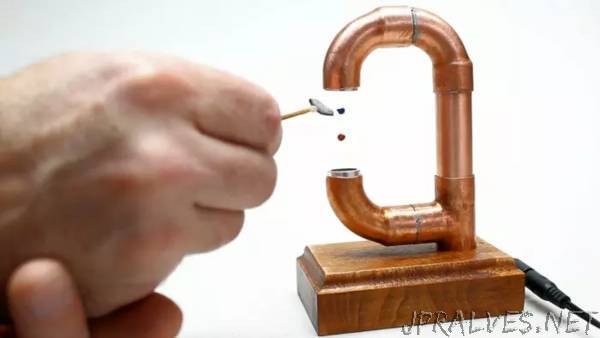
“If you want to experiment with ultrasonic levitation and let objects float through the energy of sound waves, you do not need any scientific equipment, complicated controls or expensive kits. An Arduino, a stepper motor driver and a rebuilt distance sensor are sufficient.
Granted, our Mini Ultrasonic Levitation Device can not hold heavy objects in the air. But even small polystyrene beads are fascinating when they float as if by magic. Unlike magnetic levitation , the ultrasound version requires no control that monitors the suspended object. In acoustic levitation, an object “nests” in a node of a standing acoustic wave. As a result, several things can float at the same time - and even take evenly distributed positions.
The basis of this project are the ultrasonic vibrators, which are installed in distance sensors such as the HC-SR04 module, which you get on eBay for less than 2 euros.
These modules contain an ultrasonic transducer which acts as a transmitter (T) and a second one as a receiver (R). In principle, logically, the T (transmitter) labeled transducer works better than the transmitter than the one marked R. For the first experiments, however, this is good. If you want to be on the safe side right from the start, you will buy two HC-SR04 modules and only solder the transmitters. Please do not throw away the grille of a receiver, which can later serve as an invaluable service.
The ultrasonic vibrators are designed for 40 kHz and thus work most effectively even at this frequency. This signal generates an Arduino Nano .
The code
The Arduino sketch does most of the work in setup()the field. First, the analog ports are defined as output. Then timer 1 is configured to trigger the compare interrupt at 80 kHz intervals . Within this interrupt, the states of all analog ports are reversed. The 80 kHz square wave voltage thus results in a 40 kHz full wave. For the loop()loop then nothing remains to be done.”
